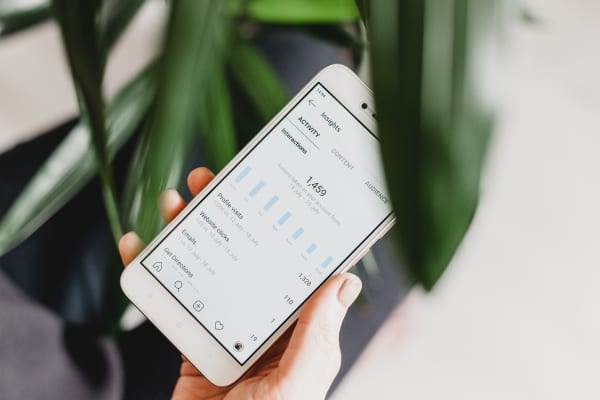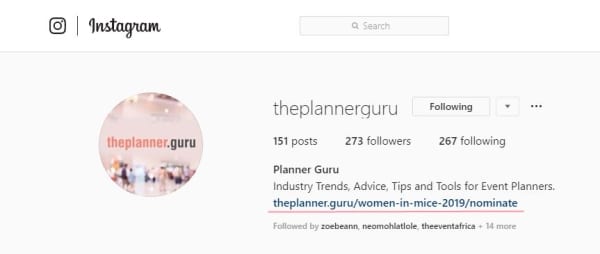There are a few fundamentals to Instagram that you need to be mindful of, to get the most out of the effort you are putting into it. These can be summarised as follows:
Make sure you have set up a business profile.
It’s so easy to do. Simply create an instagram account and then select the option ‘switch to business account’. The full details on how to do this can be found here.
A business account is free, and like Facebook comes with insights with statistics (for things like impressions, engagement and audience demographics) to help you assess how well your profile is performing.
If you’re an event organiser, you will probably want to set up an Instagram account for any annual events you hold, rather than just posting about them on your company profile. This ensures your communication around each event is relevant to that niche audience.

Don’t ‘overpost’.
While most social media marketing advice runs along the lines of “more is better”, Instagram is one of the few exceptions. Posting too often will flood your followers’ newsfeeds, which will most likely annoy them and cause them to unfollow you.
Co-Schedule, a social media management tool, recommends you do 1-2 posts a day, and don’t go over this. If you have lots of content that you want to share, rather compile it into one post. For example, you could create a:
- Photo collage using the free Instagram Layout app (click here for Android and here for iphone).
- Photo carousel by uploading up to 10 photos. A user needs to swipe to see the next photo – so put your best photo first!
- Instagram story in which you can include videos, photos, stickers, sound and more. For more about the benefits of Instagram stories, read this.
Work out when is the best time to post.
There is a lot of advice about when to post on Instagram. Generally users use the platform outside of office hours – CoSchedule suggests between 8am and 9am, and again at 2am. However use this as a starting point to test the success of your posts at these times. Often global stats don’t apply neatly to South Africans (our work days tend to start a lot earlier, for example), and they might also be skewed by large numbers of users who are students and not working. Or they might not be. But if you don’t test this, you won’t know.
Your audience engagement might also change over time. The events industry is a tricky one as there are peaks and lulls in different months, so it is not a static pattern either. Be prepared to keep testing, assessing and adapting your Instagram posting schedule.

Include your post links in your bio.
Why? Because any links you put in your post will appear as normal text and will not be clickable. As a work around you can include a link in your bio, and then direct your followers to it. ‘Find link in bio’ is a common Instagram phrase.
Remember, you can only feature one link at a time, so a useful tip is for that link to direct to a page that is specifically set up for your Instagram account. Linktr.ee is a service that can help you do this. Or, if you are able to edit your website easily, you could DIY it and create a page featuring all of your latest posts with their own unique links.
There is a second option to keep in mind; Instagram stories. You can include a link on each story, which is another benefit to posting stories. Users will simply need to swipe up on your story to access it.

Manage your hashtags wisely.
You can include up to 30 hashtags in an Instagram post. Some people recommend you use all 30, but Hootsuite warns that this looks like spam, and is also known as ‘hashtag stuffing’.
One workaround is to include a few key hashtags in your post, and then add more in a comment on the post (effectively hiding them, but users will still find your post when searching with these hashtags). Whatever you decide to do, make sure you only use relevant hashtags so as not to annoy people with irrelevant content.
The social media monitoring tool, Mention, also advises that you avoid overly broad hashtags like #food, and instead find ones that are unique to your niche audience. You’ll have much better luck connecting to them in this way.
There are a number of free hashtag tools that can help you identify which ones are popular or not. But don’t forget to see what your clients, partners and even competition are using, and to play around and create your own.
Need some content ideas for your Instagram posts? Look no further – we’ve got you covered: READ THIS.




